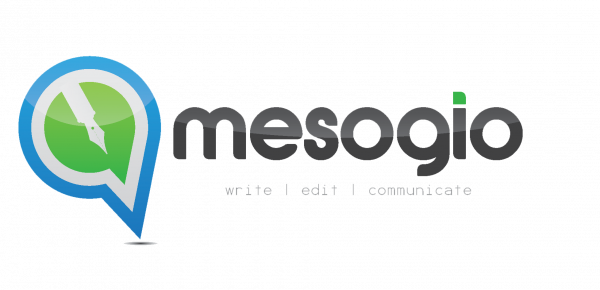Beyond Bureaucracy: How EU Storytelling Is Winning Hearts in the Digital Age
In an era defined by information overload, capturing public attention requires more than just facts and figures. EU institutions are leading the way by employing innovative storytelling techniques that transform complex messages into engaging and accessible experiences. Two remarkable examples—EU-OSHA's Napo series and the European Commission's "EU Saves Lives" virtual reality campaign—illustrate how character-driven narratives and immersive technologies can profoundly enhance public communication.
The Power of Character: Napo's Universal Appeal
Meet Napo, the animated ambassador for workplace safety. Created by the European Agency for Safety and Health at Work (EU-OSHA), Napo has become the approachable face of occupational safety throughout Europe, featuring in a series of engaging, humorous films.
Napo’s effectiveness lies in his universal appeal. With a combination of curiosity and caution, this character navigates common workplace hazards in a way that resonates deeply with audiences of all backgrounds. Whether addressing chemical safety or preventing slips and falls, viewers learn essential safety measures through relatable and entertaining scenarios rather than through dense regulations.
Perhaps the most innovative aspect of Napo’s storytelling is his wordless communication. These animations transcend linguistic barriers, ensuring they are equally impactful in Bulgaria, France, Finland, or anywhere across Europe's diverse linguistic landscape.
Immersive Experiences: Stepping Into EU Emergency Response
While Napo engages audiences through animation, the European Commission elevated public engagement further with its "EU Saves Lives" virtual reality campaign. This ambitious roadshow allowed citizens across Europe to step directly into the roles of EU emergency responders.
Through VR, participants piloted firefighting planes over forest fires, coordinated humanitarian aid in refugee camps, and joined search and rescue operations. This immersive storytelling method translated complex concepts like "EU civil protection mechanisms" into powerful, unforgettable experiences.
The campaign’s mobile format significantly increased accessibility, travelling to 14 European cities—from Sofia to Stockholm—and engaging thousands who might otherwise never have actively sought information on EU emergency response initiatives.
Why These Approaches Work: The Psychology of Engagement
These innovative strategies leverage fundamental aspects of human psychology:
Emotional connection: Both campaigns elicit emotional reactions—humour in Napo’s scenarios and empathy or tension within VR experiences—making the messages memorable.
Active participation: Encouraging active rather than passive consumption boosts information retention, as audiences become part of the narrative.
Simplified complexity: Both approaches convert inherently complex EU regulations and protocols into intuitive, relatable experiences accessible to everyone.
Applying These Lessons to Your Communication Strategy
Any organisation can enhance public engagement by adopting similar innovative storytelling strategies:
Develop relatable characters: Introduce mascots or recurring figures that embody your organisation’s values and guide your audience through your narrative.
Embrace visual storytelling: Utilise visual narratives, even without extensive budgets, to transcend language barriers and simplify complex content.
Explore immersive technologies: Incorporate interactive elements like 360° videos, virtual reality, or augmented reality to boost engagement.
Prioritise universal design: Craft messages that resonate across diverse cultural and linguistic contexts to maximise reach and effectiveness.
Learn from industry. Push EU Storytelling boundaries
While EU-OSHA's Napo series and the European Commission's "EU Saves Lives" VR campaign provide excellent storytelling foundations, inspiration from bold brand strategies in the private sector can propel these approaches even further.
Daring Approaches from Brand Leaders
Create Emotional Immersion: Brands like Dove engage audiences emotionally. The EU could similarly develop emotionally powerful campaigns highlighting real-life impacts of European collaboration and policies.
Embrace User-Generated Content: Companies like Supreme and Airbnb effectively utilise authentic community narratives. EU institutions can also harness citizen-generated stories to enhance credibility and connection.
Develop Character-Driven Narratives: Inspired by Bombas, the EU could introduce real European citizens as central, recurring figures to illustrate the benefits of European integration vividly.
Leverage Data-Driven Storytelling: Following the lead of Visa, EU institutions could create interactive data-driven narratives highlighting regional impacts of EU initiatives.
Incorporate Sustainability Narratives: Taking inspiration from Rothy's, sustainability efforts could be presented as ongoing stories with clearly identifiable heroes, challenges, and successes.
EU institutions can significantly deepen their public connections by embracing these bold storytelling strategies. Now is the moment to tell stories that truly resonate—stories that make citizens feel an integral part of Europe.
Ready to Transform Your Storytelling?
At Mesogio, we specialise in developing compelling and innovative communication strategies tailored to deeply resonate with diverse audiences. Let’s collaborate to bring your storytelling vision to life.
Contact us today to begin your journey towards impactful, memorable storytelling.

